BOOK REVIEW

The Book of Trespass, crossing the lines that divide us. 2020. By Nick Hayes. London, Bloomsbury. Hardback, 454pp. ISBN 978-1-5266-0469-9. 9 781526 604699. £20.
In his own words, the author is an illustrator, print-maker, writer (novels) and propagandarer-in chief for the Land Justice Network. This is an unusual, but fascinating book, if not unique in its in-depth treatment and presentation of trespass in the UK. The subject matter is woven within the eleven chapters that are named after animals such as the badger, fox, hare, toad, cockroach and stag. You can almost guess what politics fit the attributes and wilyness, fleet-footedness and slipperyness of each species. This is not just a walk through the failings and uncertainties of trespass law, it is a comprehensive analysis of the vagaries of trespass with much support from literature. For each of these chapters the author has set himself the task of deliberately trespassing into the estates of some of the landed gentry, and demonstrating how these vast lands were once under public ownership, but became enclosed, denying access, sometimes with the moneys received from giving up slave plantations. Each chapter has a narrative of his own trespassing with asides relevant to the chapter animal; a neat and unusual trick. If he is not camping out or trekking, he is kayaking along rivers such as the Kennet and Thames, sitting on the steps of Cliveden (emphasising that only 3% of rivers in England are actually open to the public). He raises the interesting issue that ‘..wherever a Right of Way meets the watercourse, it continues to be a Right of Way’ which seems to be widely interpreted and sows confusion. One rule, he stuck religiously to in all his trespassing described in the book was it was legal under the Scottish Outdoor Access Code, which he admires over the English ‘cult of exclusion’ trespass rules. He visits may enclosed estates, for instance the vast tracts of Fonthill in Wiltshire with its 8 mile wall – to keep people out – Windsor, and Highclere which was built after clearance of Highclere village. Hayes pursuance of the right to be allowed back onto land that was once open common all stems from 1066 when William the Conquerer wiped out the 4,000 or so English things, and replaced them with his faithful 180 barons, viscounts, marquises and dukes (in that hierarchical order) – such that not much has changed today. Today, a third of Britain is still owned by the aristocracy; 24 non-royal dukes own almost four million acres. Hayes cannot stand Keep Out notices! Of places where a licence – or ticket – has to be obtained for entry – for instance Stonehenge – it is ironic that the origin of the word licence means ‘to be allowed’ from the Latin licere. His style is very much frankly to the point, but he is not from Yorkshire. He grew up in Berkshire, near to another colleague and author who has written ‘Who Owns England’ (https://wildlifematters.com/?p=539 ). The two books should be read together as companion volumns. He quotes salient facts and figures from Shrubsole. Many of the revolts in England against enclosures are dealt with and make fascination reading; nearly all were failed local risings usually with fatal results. There are ‘Notes’ included for each of the chapters that carry supporting information and links for the statements he makes. This is a very up-to-date book, that will surely be updated when more links become available as increasing transparency occurs. The book is illustrated throughout by the authors’ double page prints which have a particular heavy attractive black and white style – often menacing, gothic, and surreal – that often sets the countryside scene of areas within which he is trespassing. The book will be of interest to walkers and ramblers and anyone who has access to the countryside. Discussion is frequently made about Rights of Way, and the disclosures by landlords of the land holdings that they had to declare for the Highways Act 1980. The gaps and anomalys in access to the countryside with, for instance some ‘Open Access Woodlands’ that are not connected to any footpaths and thus no access, which does highlight the need to register tracks and roads for the next round of designation. In the end it all comes down to two useful supporting interactive sites, Private Eye’s publication of their land ownership map (www.private-eye.co.uk/tax-havens), and Guy Shrubsoles’ map on who owns what (www.whoownsengland.org) which gives some idea about the ownership of the countryside that people are keen to visit.
—-
Thoughts on solo walking and teatime
23 March 2020
. Left right, left right, there is a sort of Pavlovian reward for so gleefully walking over the countryside with such conscientious determination. The thought of a nice cup of tea at the end is essentially worth it. We are all so good at exercise, and now that the UK Government have said we should actually partake of the air, there is even more excuse to get outside. So what are our goals, as we adjust our fitbits, inspect our tracking software and tweak our pedometers? Are we after that average walking speed of 3-4 miles an hour, or quicker, or 10,000 paces a day? We all have our own particular pace. Mine is sub-plodder, which is far behind, fast, medium and plodder (so I found out on Hadrian’s Wall). But then my aim is to enjoy the countryside more, as indeed ramblers do more than walkers. The Battle Ramblers are a very chatty group and there is much satisfaction in talking along the way. Solitary walking opens up a great yawn of enforced silence, a great chasm that needs to be filled. We are also told that a brisk walk is better than just walking along. This is better for burning off calories apparently. So when you get back home, feel the tighter muscles, experience cramp, you are silently satisfied that you have worked your body to its daily limit. Forget the apple a day. Battle Ramblers are great sweet eaters! Regular ramblers have a canny knack of assessing their walking capabilities after a while without all the new technology. That field to cross will be about five minutes, that hedgerow to follow about ten minutes and that ploughed field uphill, well, it will still be five minutes in a fierce gale, dragged down with clodded feet, even without horizontal rain. The rewards are soaking up (sometimes literally) parts of the countryside that non-walkers will never see, and appreciating impeccable views. After a while hills are smoothed out to level ground, the left right left right continues, briskly, but not when you are a novice walker! The loss of regular walking quickly de-tones the body. At least the walk is outside and it is what the doctor ordered. I have no idea what you all think when walking alone. It could be anything. But here in 1066 Country I am always expecting to find a relic from the Battle of Hastings, there must have been stragglers cut down in the woods or were engulfed in mud, and who lost their axes, swords, daggers, bridles and rings. You never know, a hilt sticking up in the caked clay of a field of oilseed rape or field beans may be the discovery that this area needs. In the meantime, following the footpath is bound to end in a pub, which was their original purpose (so we are told) so a good pint would be welcome (apres Covid-19), or a cup of tea. (c) John Feltwell 23 March 2020
Solo Walking, end of March 2020.
Blue woods abound in Catsfield, and surrounding parishes. That is because we are all blessed with native bluebells which carpet the woods and offer their display in the spring. Wall to wall bluebells are typical of ‘ancient woodlands’ – that is woodlands that have always been woodlands since 1600 or before, and likely for centuries before; these are our ‘medieval woodlands’; Sussex men may have worked the woodlands for thousands of years before, hewing timbers for timber-framed houses of the Weald, wattles, hurdles and spiles, and for boats. Sussex women would have foraged the woodlands for faggots, herbs and fungi. A typical timber-framed building in the Weald would have needed about 143 trees (‘43 great trees, and 233 small timbers’) weighing 27 green tons. (cf. ‘In an Old House’ by P&S Varlow 2017). Now we walk and admire the finest oaks that have grown on. All this bounty and pleasure of the woods is what we ramblers appreciate each time we go out. Now that the UK government has told us to exercise by ourselves this appreciation is all ours to embrace. My local route takes me across old fields that still show the ups and downs of medieval furrow lines – the ‘ridge and furrows’ – close to the centre of Catsfield (‘medieval field systems’), down old sunken lanes, across small watercourses and through ancient woodlands freshly part-felled leaving the oak ‘standards’. These are still working woods. Pink orchids of two or three species will appear soon. The waysides are full of alexanders growing fast skywards, introduced by the Romans, and milk-maids or cuckoo flower is flowering having erupted from the sward in the last two weeks, only waiting for the male orange tip (the female comes out later when, after April showers, it is easier to find a mate). In the glades the peacock, small tortoiseshells and comma butterflies are about, and soon the brimstone, all hibernators that are at least six months old, just like the impossibly large queen bumblebees looking for an old mouse nests in which to establish a colony. There is, of course, the possibly spurious connection between old ladies and bumblebees, their cats eating mice whose subterranean nests then become vacant for bumblebees. The open fields we walk through have solitary oak trees that some call ‘fairy trees’; they were once ordinary trees within hedgerows and as boundary trees, now unconnected from their original cover and woodland. There is nothing to worry about walking through the woods by oneself. There are no red riding hoods, only the eery scrapping of interlocked coppice tree stems moving around in the wind. Otherwise you have the woods and the fields to yourselves, and the fairies. The deer may see you, but are too clever to be seen. Foxes and badgers usually mind their own business. The pronounced call of the distant Sussex ‘yaffle’ or green woodpecker is always in the air, so too the characteristic keys of a family group of buzzards, now quite regular, once rare not too long ago. Twitter is currently showing sparrowhawk having taken a green woodpecker in a garden – quite an encounter! Pheasants and wrens compete for stridency. We await the migrants, the aponymous chiff-chaff, whitethroats in the bushes, the swallow, house martin and swift. Amongst the sleet showers (29 March 2020), the woodland floor is now carpeted white with wood anemones but the green field layer will soon burst forth in glorious blue. It is surprising what you see when walking or rambling – a better appreciation of the countryside and its wildlife including badgers, deer and wildflowers. If you think you know your local area by road be surprised by the unexpected views, especially if you live in the High Weald Area of Outstanding Natural Beauty (AONB) with its surprising ups and downs of its steep valleys or ghylls. (c) John Feltwell 30 March 2020
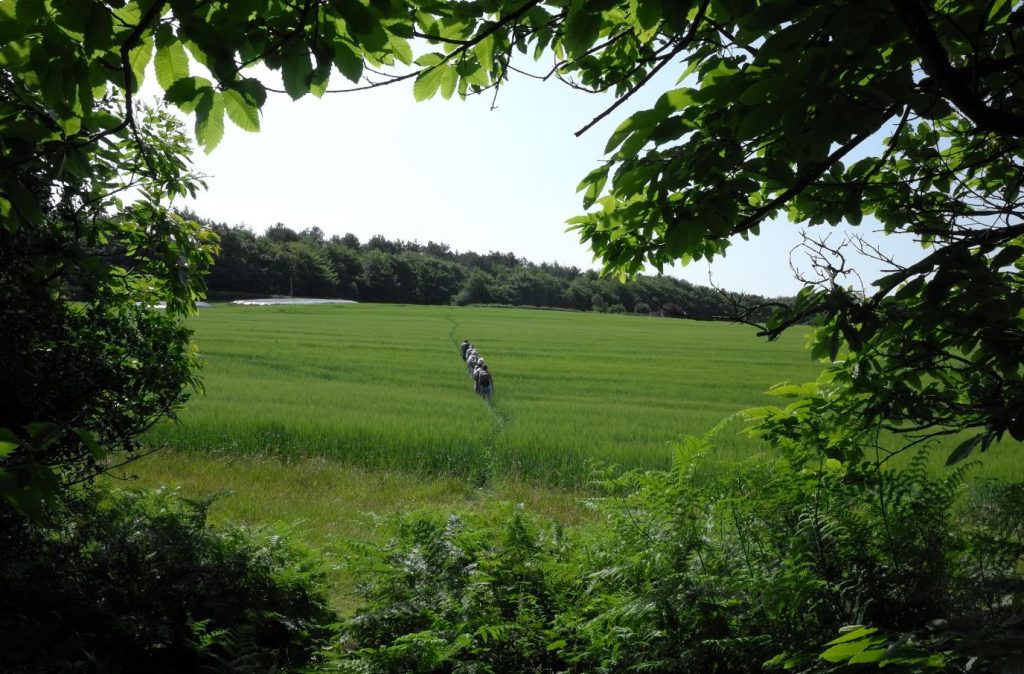
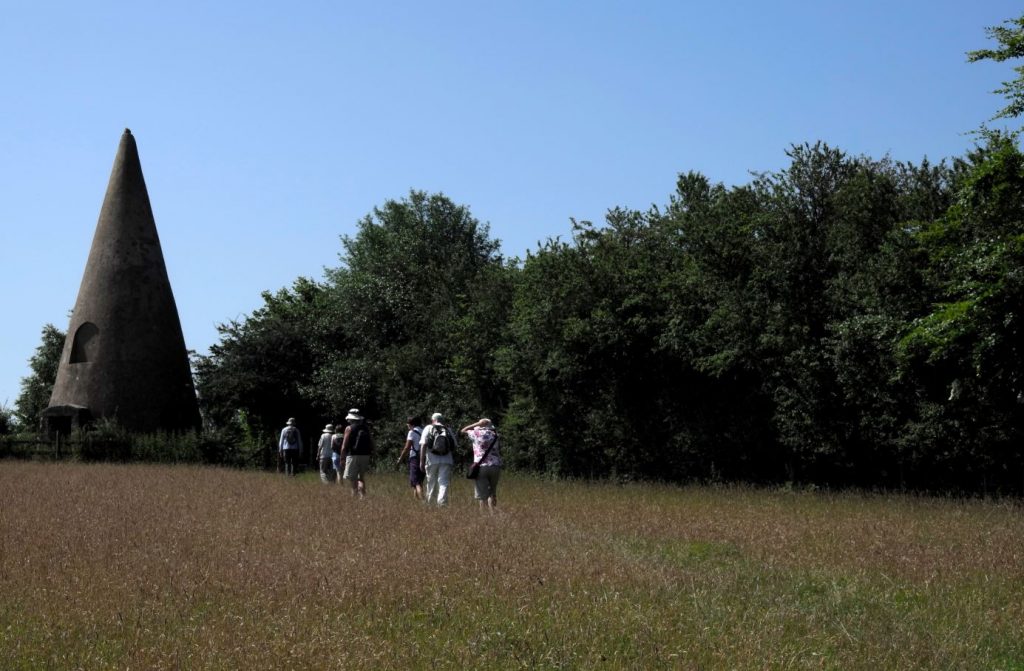
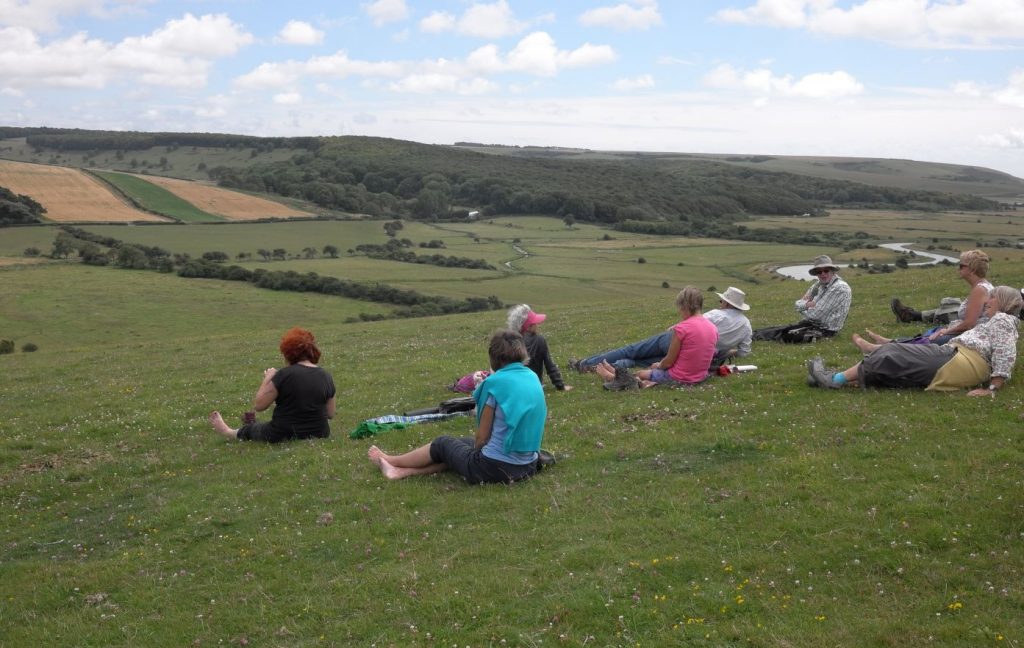
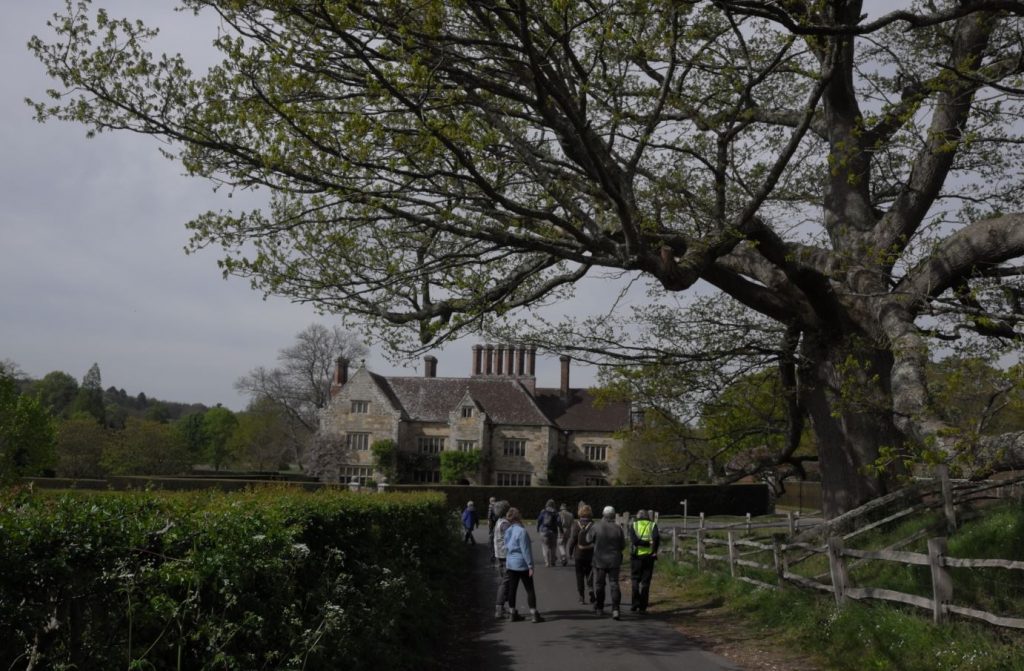
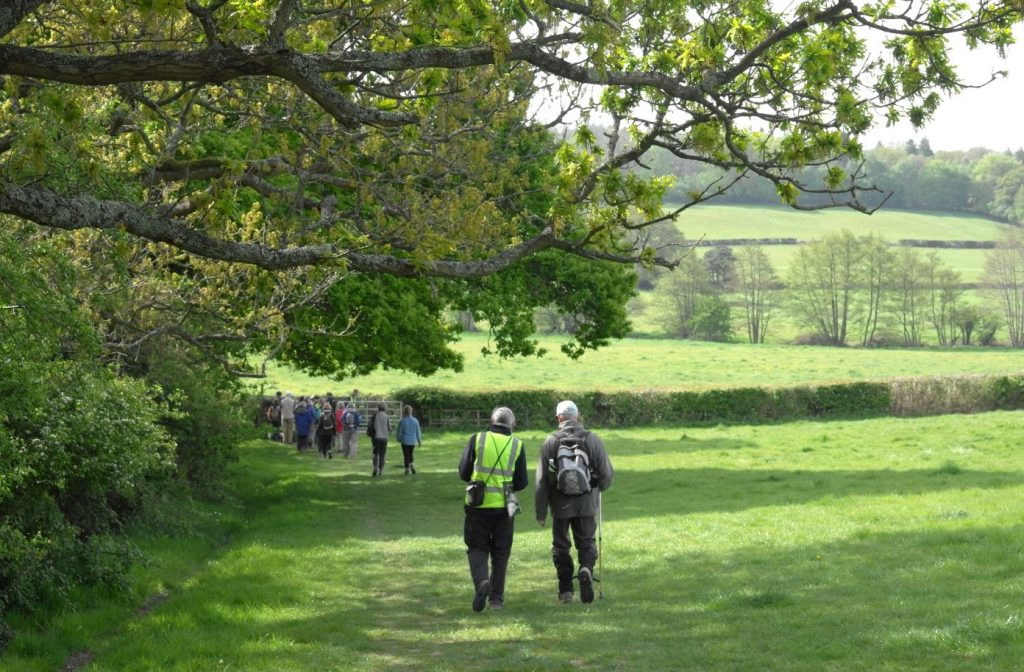
I am Chair of The Battle Ramblers, so if you want to join us, here is the website: http://battleramblers.org
